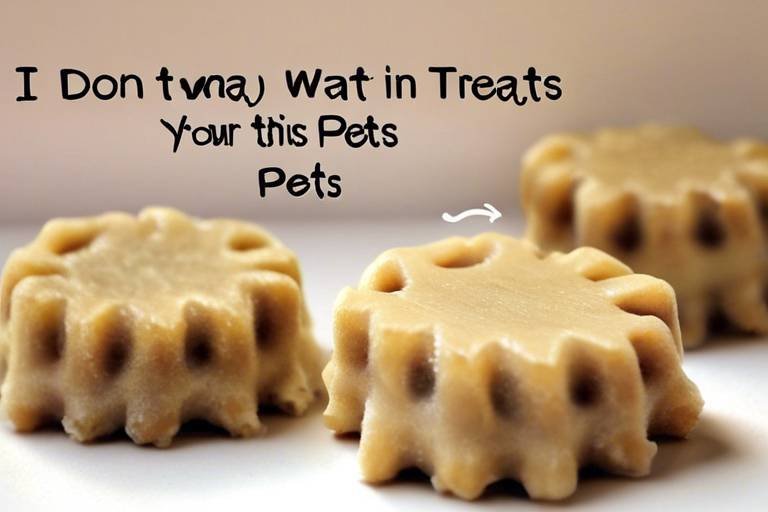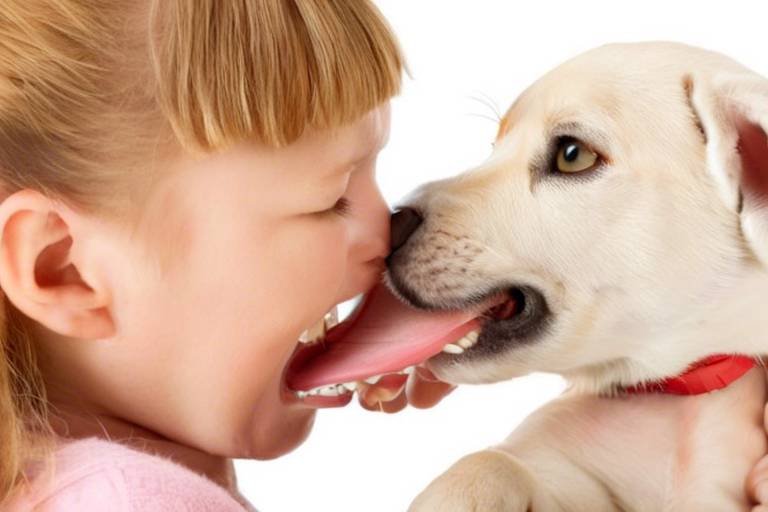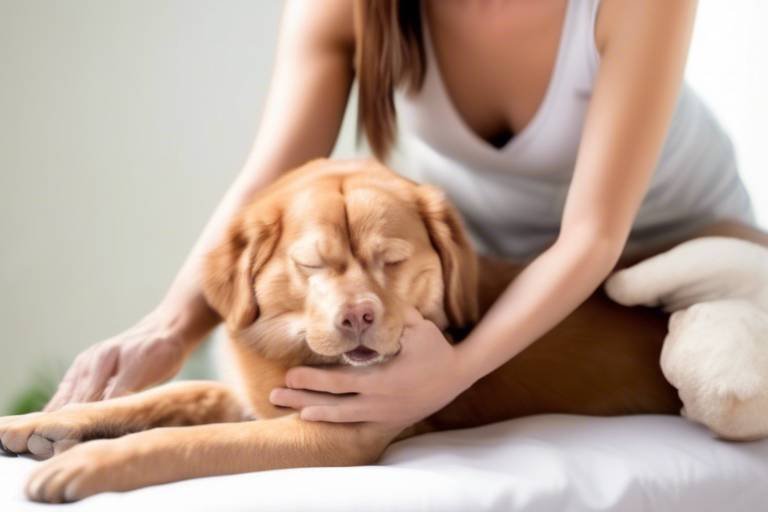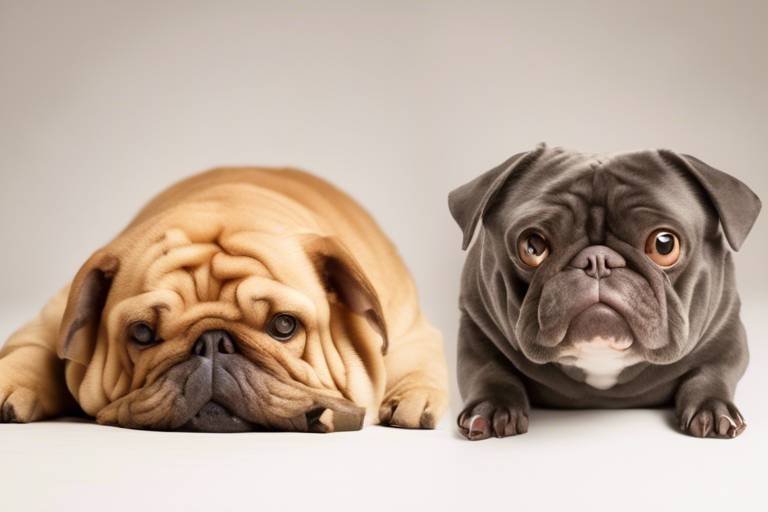Grooming Tips for Healthy Pets
This article provides essential grooming tips to ensure your pets remain healthy, happy, and well-cared for. Proper grooming not only enhances their appearance but also contributes to their overall well-being. Think of grooming as a way to show your love and care for your furry companions. Just like we enjoy a good haircut or a refreshing shower, our pets appreciate the same treatment. Regular grooming can be a bonding experience that strengthens your relationship with your pet while keeping them looking and feeling their best.
Regular grooming is crucial for maintaining your pet's hygiene and health. It helps to prevent skin issues, matting, and promotes a strong bond between you and your furry friend. Imagine if you never brushed your hair or cleaned your skin; it would lead to tangles, dirt, and discomfort. The same goes for our pets! Grooming helps remove dirt, debris, and loose hair, which can otherwise lead to skin irritations and infections. Moreover, it’s a great opportunity to check for any unusual lumps, bumps, or skin conditions that might need a vet's attention.
Selecting appropriate grooming tools is vital for effective pet care. The right brushes, combs, and clippers can make grooming easier and more enjoyable for both you and your pet. Think of grooming tools as your pet's personal spa equipment. Just as you wouldn’t use a kitchen knife to cut your hair, you shouldn’t use the wrong tools on your pet. Each type of fur requires specific tools to ensure a smooth grooming process. For instance, a slicker brush is perfect for long-haired pets, while a bristle brush works wonders for short-haired breeds.
Understanding the different types of brushes available can help you choose the best one for your pet's fur type. Each brush serves a unique purpose and can improve grooming efficiency. Here’s a quick breakdown:
| Fur Type | Recommended Brush | Purpose |
|---|---|---|
| Short Hair | Brushing Mitt | Removes loose hair and dirt |
| Long Hair | Slicker Brush | Detangles and smooths fur |
| Curly Hair | Pin Brush | Prevents matting |
Short-haired pets require specific brushes that effectively remove loose hair and dirt. Regular brushing keeps their coat shiny and healthy while minimizing shedding around the house. A simple brushing session can be done once a week, but if your pet loves to roll around in the dirt, you might want to do it more often. Plus, it’s a great excuse to spend some quality time together!
Long-haired pets need special attention to prevent tangles and matting. Using the right tools can make grooming less stressful and more enjoyable for both the pet and the owner. For these furry friends, daily brushing is often necessary to keep their coats looking fabulous. Think of it as untangling a necklace; with the right technique and tools, it becomes a lot easier!
The frequency of grooming varies by breed and coat type. Knowing how often to groom your pet can help maintain their coat and reduce potential health issues. For instance, some breeds like Poodles and Shih Tzus require more frequent grooming due to their hair type, while others like Beagles or Boxers may only need grooming every few weeks. Always pay attention to your pet's needs and adjust accordingly!
Bathing is an essential part of grooming that helps maintain your pet's cleanliness. Understanding the right products and techniques can make bath time less stressful for both you and your pet. Just like we enjoy a refreshing shower after a long day, our pets need that too! Bathing not only removes dirt but also helps in keeping their skin healthy.
Selecting a suitable shampoo is crucial for your pet's skin and coat health. Look for products that are specifically formulated for pets and avoid human shampoos. Human shampoos can be too harsh for your pet’s sensitive skin, leading to irritation. Instead, opt for gentle, hypoallergenic shampoos that cater to their specific needs.
Bathing frequency depends on your pet's breed, activity level, and coat type. Regular baths can help prevent skin irritations and keep your pet smelling fresh. For instance, dogs that love to roll in mud will need more frequent baths compared to those who prefer lounging on the couch. Generally, a good rule of thumb is to bathe your dog every 4-6 weeks, but always consider your pet's individual needs.
- How often should I groom my pet? It depends on the breed and coat type. Long-haired pets may need daily brushing, while short-haired pets can be groomed weekly.
- Can I use human shampoo on my pet? No, human shampoo can irritate your pet's skin. Always use pet-specific products.
- What tools do I need for grooming? Essential tools include brushes, combs, nail clippers, and pet-safe shampoos.
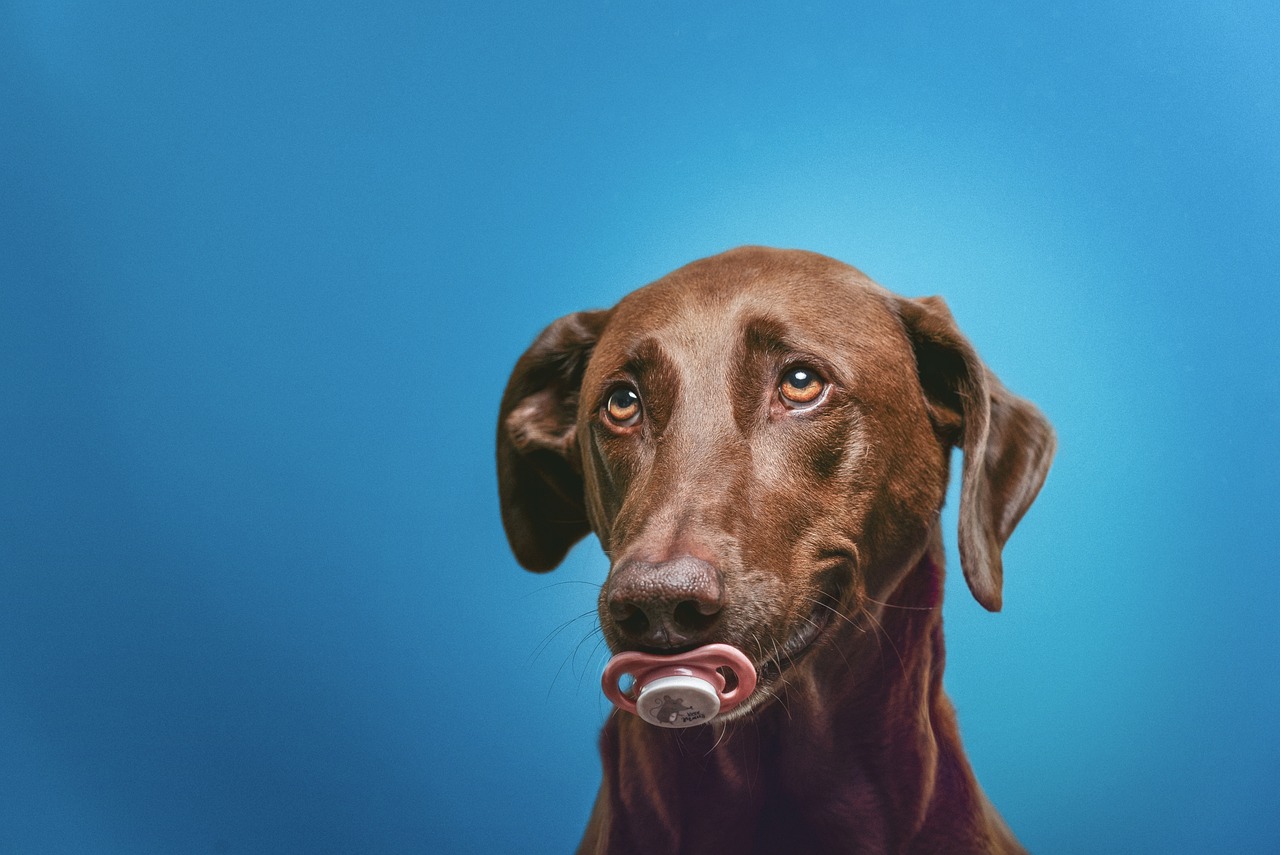
Importance of Regular Grooming
This article provides essential grooming tips to ensure your pets remain healthy, happy, and well-cared for. Proper grooming not only enhances their appearance but also contributes to their overall well-being.
Regular grooming is crucial for maintaining your pet's hygiene and health. You might wonder why it’s so important? Well, think of grooming as a health check-up, but with a brush instead of a stethoscope! It’s not just about making your furry friend look good; it’s about ensuring they feel good, too. Regular grooming helps to prevent skin issues, matting, and promotes a strong bond between you and your furry friend.
By engaging in regular grooming sessions, you can:
- Identify Skin Problems Early: Regular brushing allows you to spot any unusual lumps, bumps, or skin irritations before they escalate into serious issues.
- Reduce Shedding: Grooming helps remove loose fur, which means less hair on your furniture and clothes. It’s a win-win!
- Enhance Bonding: The time spent grooming your pet not only keeps them looking their best but also strengthens the emotional connection between you both.
Moreover, grooming is an excellent way to keep your pet's coat clean and free from dirt, debris, and parasites like fleas and ticks. Imagine your pet’s fur as a protective shield; if it’s dirty and matted, it can’t do its job effectively. Keeping that coat healthy ensures that your pet remains comfortable and happy.
In addition to the physical benefits, grooming can also have a significant impact on your pet's mental well-being. Regular grooming routines can help reduce anxiety and stress in pets, making them feel secure and loved. Just like a good massage can relax us after a long day, grooming can have a soothing effect on our furry companions.
So, how often should you groom your pet? This largely depends on the breed and coat type. Short-haired breeds may only need a quick brush once a week, while long-haired breeds might require daily attention to prevent tangles and mats. Keeping a consistent grooming schedule can help you stay on top of your pet's needs and ensure they remain in tip-top shape.
In summary, regular grooming is not just a luxury; it’s a necessity for your pet's health and happiness. By making it a routine part of your pet care, you’ll be rewarded with a happier, healthier, and more affectionate companion.
Selecting appropriate grooming tools is vital for effective pet care. The right brushes, combs, and clippers can make grooming easier and more enjoyable for both you and your pet.
Understanding the different types of brushes available can help you choose the best one for your pet's fur type. Each brush serves a unique purpose and can improve grooming efficiency.
Short-haired pets require specific brushes that effectively remove loose hair and dirt. Regular brushing keeps their coat shiny and healthy while minimizing shedding around the house.
Long-haired pets need special attention to prevent tangles and matting. Using the right tools can make grooming less stressful and more enjoyable for both the pet and the owner.
The frequency of grooming varies by breed and coat type. Knowing how often to groom your pet can help maintain their coat and reduce potential health issues.
Bathing is an essential part of grooming that helps maintain your pet's cleanliness. Understanding the right products and techniques can make bath time less stressful for both you and your pet.
Selecting a suitable shampoo is crucial for your pet's skin and coat health. Look for products that are specifically formulated for pets and avoid human shampoos.
Bathing frequency depends on your pet's breed, activity level, and coat type. Regular baths can help prevent skin irritations and keep your pet smelling fresh.
Q: How often should I groom my pet?
A: The frequency of grooming depends on the breed and coat type. Short-haired pets may need grooming once a week, while long-haired pets often require daily brushing.
Q: Can I use human shampoo on my pet?
A: No, it’s best to use shampoos specifically designed for pets, as human shampoos can irritate their skin.
Q: What are the signs my pet needs grooming?
A: Signs include excessive shedding, tangles, dirt buildup, and skin irritations. Regular grooming can help you spot these issues early.
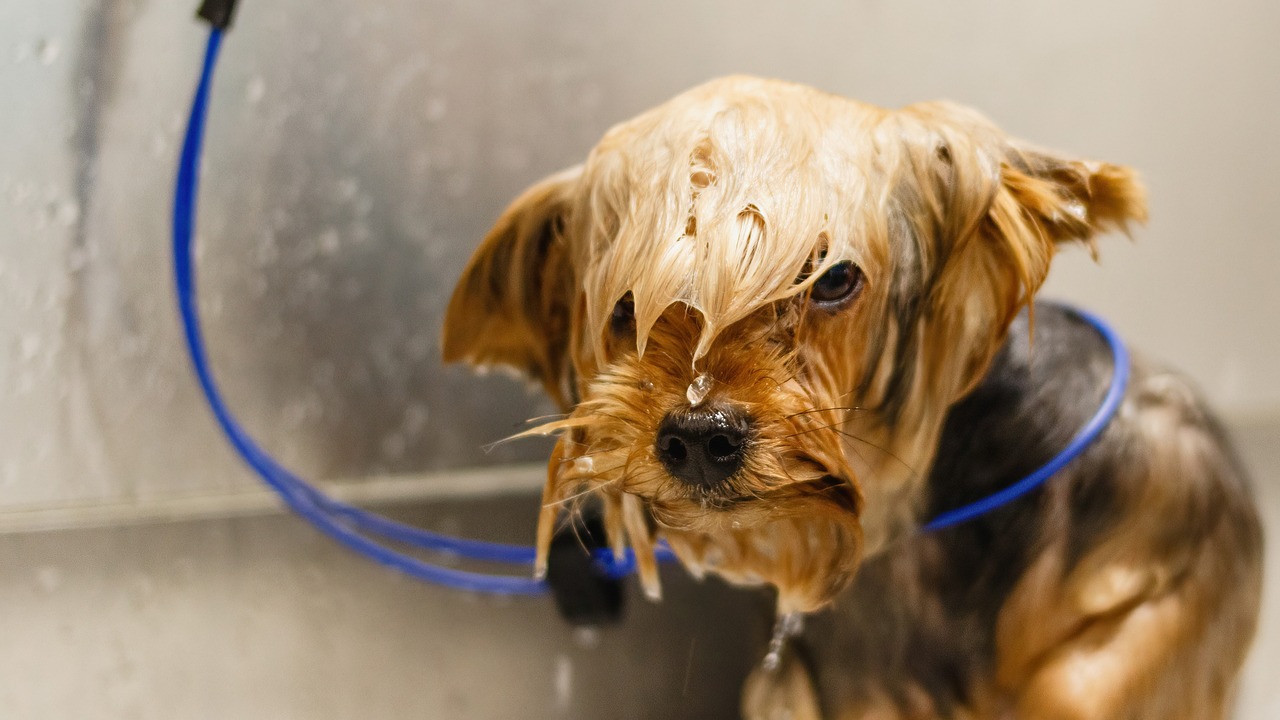
Choosing the Right Grooming Tools
When it comes to grooming your beloved pets, choosing the right tools is just as important as the grooming process itself. Imagine trying to paint a masterpiece with a brush that’s too stiff or too soft—similarly, using the wrong grooming tools can lead to frustration for both you and your furry friend. The right brushes, combs, and clippers not only make the task easier but also ensure that your pet enjoys the experience, turning grooming time into a bonding moment.
First and foremost, you need to consider your pet's coat type. Is your pet a fluffy Golden Retriever or a sleek Siamese cat? Different fur types require different grooming tools. For instance, a slicker brush is perfect for long-haired pets to detangle their fur, while a bristle brush works wonders for short-haired breeds to remove dirt and loose hair. Understanding these differences can elevate your grooming game significantly.
Additionally, the size of the tool matters. Using a small brush on a large breed can be tedious, while a large brush on a small pet might be overwhelming. It’s essential to find tools that are comfortable for both you and your pet. Ergonomic handles can make a world of difference, especially during longer grooming sessions. You want to ensure that you’re not straining your wrist while trying to keep your pet calm.
Here’s a quick overview of some essential grooming tools you might consider:
| Tool Type | Best For | Purpose |
|---|---|---|
| Slicker Brush | Long-haired pets | Detangling and removing loose hair |
| Brushing Comb | Short-haired pets | Removing dirt and loose hair |
| Undercoat Rake | Double-coated breeds | Removing undercoat and preventing matting |
| Clippers | All breeds | Trimming fur for a neat appearance |
In addition to the basic tools, consider investing in some specialized items. For example, if your pet has sensitive skin, look for grooming tools with softer bristles or rounded tips to minimize discomfort. Grooming gloves are also a fantastic option—they allow you to bond with your pet while removing loose hair and dirt without the hassle of traditional brushes.
Lastly, don’t forget about cleaning your grooming tools. Just like any other equipment, your brushes and clippers need to be kept clean to function effectively. Regularly removing hair and debris, along with sanitizing your tools, ensures that you’re not transferring any dirt or bacteria back onto your pet’s coat.
In conclusion, the right grooming tools are essential for maintaining your pet’s health and happiness. By taking the time to choose the appropriate brushes, combs, and clippers, you’ll not only make grooming easier but also create a positive experience for your furry friend. Remember, grooming isn’t just about aesthetics; it’s a vital part of your pet’s overall well-being.
- How often should I groom my pet? The frequency depends on your pet’s breed and coat type. Long-haired pets may require daily grooming, while short-haired ones may need it weekly.
- Can I use human grooming tools on my pet? It's best to use tools specifically designed for pets, as human tools may not be effective and can irritate their skin.
- What should I do if my pet hates grooming? Start slowly, use treats, and create a positive environment to help them associate grooming with good experiences.
Types of Brushes for Different Fur Types
This article provides essential grooming tips to ensure your pets remain healthy, happy, and well-cared for. Proper grooming not only enhances their appearance but also contributes to their overall well-being.
Regular grooming is crucial for maintaining your pet's hygiene and health. It helps to prevent skin issues, matting, and promotes a strong bond between you and your furry friend.
Selecting appropriate grooming tools is vital for effective pet care. The right brushes, combs, and clippers can make grooming easier and more enjoyable for both you and your pet.
Understanding the different types of brushes available can help you choose the best one for your pet's fur type. Each brush serves a unique purpose and can improve grooming efficiency. Just like you wouldn't use a hammer to screw in a nail, using the right brush for your pet's coat type can make all the difference!
For instance, if you have a short-haired pet, a simple bristle brush or rubber grooming mitt can do wonders. These tools effectively remove loose hair and dirt while keeping their coat shiny. On the other hand, if your furry friend has a long-haired coat, you'll want to invest in a slicker brush or a wide-toothed comb to tackle tangles and prevent matting.
Here’s a quick overview of the most common brush types:
| Brush Type | Best For | Purpose |
|---|---|---|
| Bristle Brush | Short-haired pets | Removes loose hair and dirt |
| Slicker Brush | Long-haired pets | Untangles fur and removes mats |
| Rubber Grooming Mitt | Short-haired pets | Gentle massage and hair removal |
| Wide-toothed Comb | Long-haired pets | Detangles without pulling |
When grooming, it’s essential to pay attention to your pet's comfort. Using the right brush can not only make the process smoother but also turn it into a bonding experience. Think of it as a mini spa day for your pet—who doesn’t love a good pampering session?
Short-haired pets require specific brushes that effectively remove loose hair and dirt. Regular brushing keeps their coat shiny and healthy while minimizing shedding around the house. A quick session with a bristle brush can significantly reduce the amount of pet hair on your furniture and clothes, making your home feel cleaner. Plus, it’s a great way to check for any skin irritations or fleas!
Long-haired pets need special attention to prevent tangles and matting. Using the right tools can make grooming less stressful and more enjoyable for both the pet and the owner. Always start from the tips of the hair and work your way up to the roots—this technique helps to avoid pulling and discomfort. If you encounter a tough knot, don’t yank it out! Instead, gently work through it with your fingers or a comb to keep your pet calm.
The frequency of grooming varies by breed and coat type. Knowing how often to groom your pet can help maintain their coat and reduce potential health issues.
Bathing is an essential part of grooming that helps maintain your pet's cleanliness. Understanding the right products and techniques can make bath time less stressful for both you and your pet.
Selecting a suitable shampoo is crucial for your pet's skin and coat health. Look for products that are specifically formulated for pets and avoid human shampoos.
Bathing frequency depends on your pet's breed, activity level, and coat type. Regular baths can help prevent skin irritations and keep your pet smelling fresh.
- How often should I brush my pet? It depends on the breed and coat type. Short-haired pets may only need brushing once a week, while long-haired pets should be brushed several times a week.
- Is it necessary to use pet-specific shampoo? Yes, pet-specific shampoos are formulated for their skin pH and are less likely to cause irritation.
- Can I use human grooming tools on my pet? It's best to use tools designed for pets to ensure comfort and effectiveness.
Brushing Short-Haired Pets
When it comes to grooming short-haired pets, many owners assume that less is more. However, regular brushing is essential for maintaining a healthy coat and ensuring your pet feels their best. Short-haired pets, such as Beagles, Boxers, and Dachshunds, may not require as much grooming as their long-haired counterparts, but that doesn’t mean you can skip it altogether. In fact, brushing helps to remove loose hair, dirt, and debris, keeping your home cleaner and your pet looking sharp.
One of the primary benefits of brushing short-haired pets is the stimulation of the skin and coat. When you brush your pet, you’re not just removing dirt; you’re also distributing natural oils throughout their fur. This process not only keeps their coat shiny but also promotes healthy skin. Imagine your pet’s coat as a beautiful garden; it needs regular tending to flourish. The right grooming tools can make this task enjoyable for both you and your furry friend.
For short-haired pets, a rubber or bristle brush is often the best choice. These brushes are gentle on the skin and effective in removing loose hair. Here’s a quick overview of some popular brushes:
| Brush Type | Best For | Benefits |
|---|---|---|
| Rubber Brush | Short-haired breeds | Removes loose hair and dirt; gentle on the skin |
| Bristle Brush | Short-haired breeds | Distributes natural oils; adds shine to the coat |
| Flea Comb | All breeds | Removes fleas and dirt; great for sensitive skin |
It's also important to establish a brushing routine. Aim for at least once a week, but if your pet has a particularly active lifestyle or is prone to shedding, you might want to increase that frequency. Think of it as a mini spa day for your pet! They’ll love the attention and the gentle massage that comes with brushing. Plus, regular grooming sessions can help you spot any potential skin issues early on, such as irritations or parasites.
Another tip is to pay attention to the areas where dirt and dander tend to accumulate, such as around the ears, under the belly, and between the toes. These spots often require a little extra care. Use your fingers or a soft cloth to wipe away any buildup gently. Remember, grooming is not just about aesthetics; it’s a crucial part of your pet’s health and well-being.
In conclusion, brushing your short-haired pet is a simple yet impactful way to show you care. With the right tools and a regular routine, you can keep your pet looking great while also promoting a healthy coat and skin. So grab your brush, put on some relaxing music, and enjoy this special bonding time with your furry companion!
- How often should I brush my short-haired pet? Aim for at least once a week, but more frequent brushing may be necessary if your pet sheds a lot.
- What type of brush is best for my short-haired pet? Rubber and bristle brushes are excellent choices for short-haired breeds.
- Can I use human grooming products on my pet? No, always use grooming products specifically formulated for pets to avoid skin irritations.
- What should I do if I find mats in my pet's fur? If you encounter mats, gently work them out with your fingers or a comb. If they are severe, consider seeking professional grooming assistance.
Brushing Long-Haired Pets
Brushing long-haired pets is not just a chore; it’s an essential part of their grooming routine that can transform a potential battle into a bonding experience. If you’ve ever tried to brush a long-haired dog or cat, you know it can sometimes feel like trying to untangle a ball of yarn that has seen better days! But fear not! With the right techniques and tools, you can make this process smoother for both you and your furry friend.
First off, patience is key. Long-haired pets, such as Persian cats or Golden Retrievers, often have coats that can easily become matted if not cared for properly. Regular brushing helps to prevent these tangles from forming, which can be painful for your pet and time-consuming for you. Aim to brush your long-haired pet at least two to three times a week, or even daily if they have particularly thick or curly fur.
When it comes to the tools you’ll need, a good quality brush is essential. Here are some tools that can make your life easier:
- Slicker Brush: Great for removing tangles and loose hair.
- Wide-Toothed Comb: Perfect for detangling without pulling on the hair too much.
- De-shedding Tool: Helps to reduce shedding by removing undercoat hair.
To start brushing, make sure your pet is comfortable. Find a quiet spot where they feel safe, and let them get used to the brush before diving in. Start at the base of the neck and work your way down, using gentle strokes. Always brush in the direction of hair growth to avoid discomfort. If you encounter a mat, don’t just yank it out! Instead, use your fingers to gently separate the hair or a comb to ease it out. Think of it as a delicate dance rather than a wrestling match!
Another important tip is to reward your pet during and after the grooming session. A few treats or some extra cuddles can go a long way in making them associate brushing with positive experiences. This not only eases their anxiety but also strengthens the bond between you two.
Lastly, remember that grooming isn’t just about aesthetics; it’s a vital part of your pet’s health. Regular brushing helps to distribute natural oils throughout their coat, keeping it shiny and healthy. Plus, it’s an excellent opportunity to check for any unusual lumps, bumps, or skin irritations. So, grab that brush and make grooming a fun and healthy routine for your long-haired companion!
Here are some common questions pet owners have about grooming long-haired pets:
- How often should I brush my long-haired pet? Ideally, you should brush them at least two to three times a week, or daily for pets with thicker coats.
- What if my pet hates being brushed? Start slow, use treats, and create a positive environment. Gradually get them used to the brush.
- Can I use human hair products on my pet? No, always use pet-specific grooming products to avoid skin irritations.
Grooming Frequency Recommendations
Understanding how often to groom your pet is essential for maintaining their coat and overall health. Just like we have different grooming needs based on our hair type and lifestyle, pets require tailored grooming schedules too. Factors such as breed, coat type, and activity level play a significant role in determining the right frequency. For instance, a long-haired breed like a Persian cat will need more frequent grooming than a short-haired breed like a Beagle. So, how do you figure out what’s best for your furry friend?
As a general guideline, here’s a breakdown of grooming frequencies based on common pet types:
| Pet Type | Recommended Grooming Frequency |
|---|---|
| Short-Haired Dogs | Every 1-2 weeks |
| Long-Haired Dogs | Every 1-3 days |
| Short-Haired Cats | Every 2-4 weeks |
| Long-Haired Cats | Every 1-2 weeks |
It’s important to remember that these are just general recommendations. If your pet is particularly active or spends a lot of time outdoors, you may need to adjust this schedule. For example, dogs that love to roll around in the mud or cats that enjoy climbing trees may require more frequent grooming to keep their coats clean and free from debris.
Additionally, observing your pet’s coat condition can provide valuable insights into their grooming needs. If you notice excessive shedding, mats forming, or a dull coat, it’s a sign that your grooming routine may need to be stepped up. Regular grooming not only keeps your pet looking fabulous but also allows you to check for any skin issues or parasites, ensuring your pet remains healthy and happy.
In conclusion, while the frequency of grooming can vary widely, staying attentive to your pet’s specific needs is the key. A little extra effort in grooming can lead to a happier, healthier pet, and a stronger bond between you and your furry companion.
- How often should I groom my pet? - It varies by breed and coat type, but generally, short-haired pets need grooming every 1-2 weeks, while long-haired pets may need it every few days.
- Can I use human shampoo on my pet? - No, it’s best to use shampoos specifically formulated for pets, as human shampoos can irritate their skin.
- What if my pet hates grooming? - Start slowly and make it a positive experience with treats and praise. Over time, your pet may become more comfortable with the process.
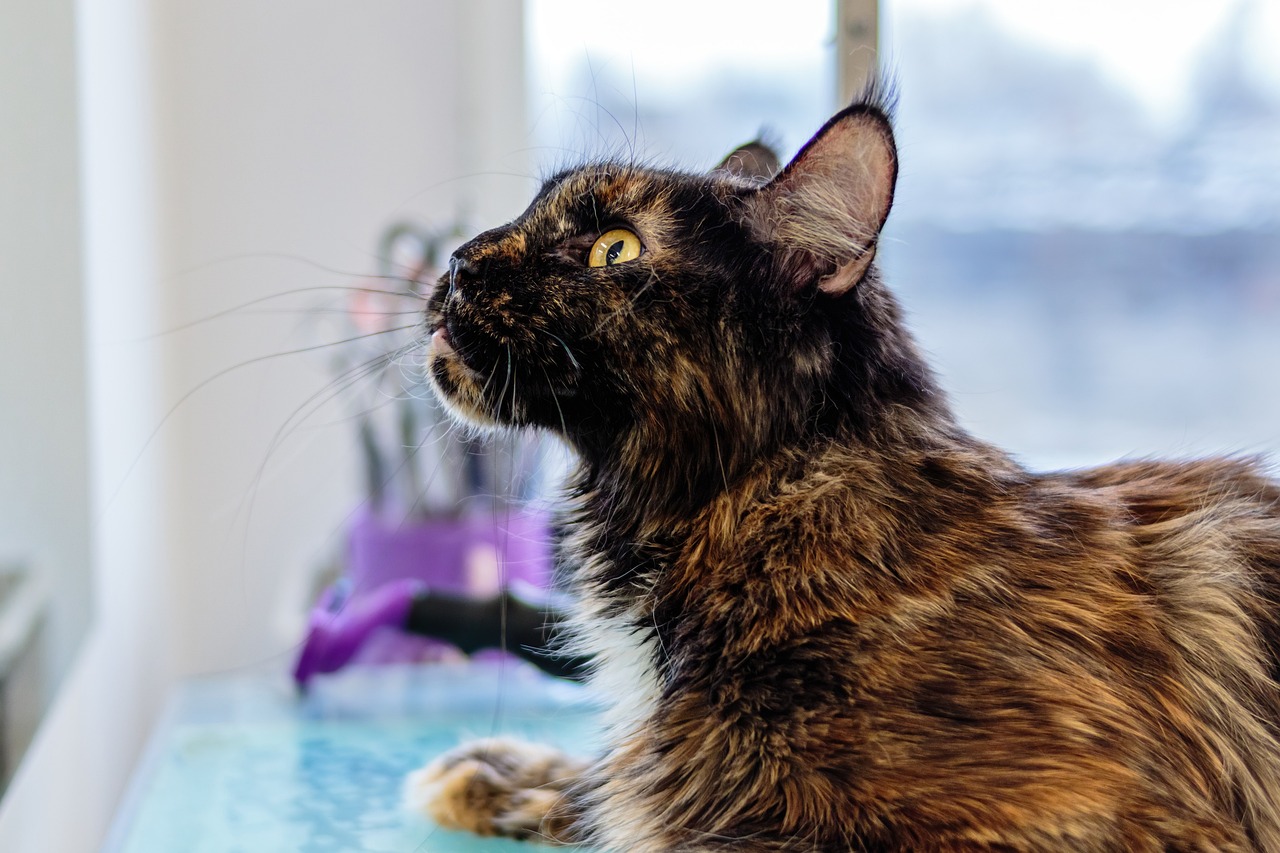
Bathing Your Pet
Bathing is an essential part of grooming that helps maintain your pet's cleanliness. Just like humans, pets can accumulate dirt, oils, and odors that can affect their skin and coat health. Regular baths not only keep your furry friend smelling fresh but also serve as an opportunity to check for any skin issues or abnormalities that may need attention. Imagine your pet as a canvas; without regular cleaning, that beautiful coat can become dull and lifeless. So, let's dive into the best practices for bathing your beloved companion!
Understanding the right products and techniques can make bath time less stressful for both you and your pet. First and foremost, choosing the right shampoo is crucial. Look for products that are specifically formulated for pets, as their skin has a different pH level compared to humans. Using human shampoos can lead to skin irritations, dryness, and discomfort for your pet. Always read the labels to ensure you're selecting a gentle, hypoallergenic formula that suits your pet's specific needs. If your furry friend has sensitive skin or allergies, consider consulting your veterinarian for recommendations.
Next, let's talk about bathing frequency. This can vary widely depending on your pet's breed, activity level, and coat type. For instance, a high-energy dog that loves to roll in mud may require more frequent baths compared to a laid-back cat that primarily stays indoors. Here’s a quick guideline:
| Pet Type | Recommended Bathing Frequency |
|---|---|
| Short-Haired Dogs | Every 4-6 weeks |
| Long-Haired Dogs | Every 4-8 weeks |
| Cats | As needed (usually every 1-3 months) |
| Active Dogs | Every 2-4 weeks |
Regular baths can help prevent skin irritations and keep your pet smelling fresh. However, over-bathing can strip the natural oils from your pet's skin, leading to dryness and irritation. So, it's a balancing act! Pay attention to your pet's coat and skin condition; if they seem particularly dirty or have an odor, it might be time for a bath.
Lastly, let's not forget the importance of making bath time a positive experience. Use warm water, and consider having treats on hand to reward your pet for good behavior. A calm environment can make all the difference. Think of it as a spa day for your furry friend! With the right approach, bathing can transform from a dreaded chore into a bonding experience that both you and your pet look forward to.
- How often should I bathe my pet? - It depends on their breed, coat type, and activity level. Generally, every 4-6 weeks is a good rule of thumb.
- Can I use human shampoo on my pet? - No, it's best to use shampoos specifically formulated for pets to avoid skin irritations.
- What if my pet hates baths? - Try to make it a positive experience with treats and praise, and consider using a handheld sprayer for more control.
Choosing the Right Shampoo
When it comes to keeping your furry friend clean and healthy, choosing the right shampoo is absolutely crucial. Just like humans, pets have different skin types and coat conditions that require specific care. Using the wrong shampoo can lead to skin irritation, excessive dryness, or even allergic reactions. So, how do you navigate the overwhelming number of products on the market? Let’s break it down!
First off, always look for shampoos that are specifically formulated for pets. Human shampoos often contain ingredients that can be too harsh for your pet's skin, which has a different pH balance than ours. A good pet shampoo will be gentle and designed to clean without stripping away natural oils. When browsing, keep an eye out for labels that mention they are hypoallergenic or dermatologist-tested.
Next, consider your pet’s specific needs. For example, if your dog has a sensitive skin condition, opt for a shampoo that contains soothing ingredients like oatmeal or aloe vera. On the other hand, if your pet is prone to fleas or ticks, you might want to choose a medicated shampoo designed to tackle those pesky critters. Always read the label carefully to ensure it addresses your pet’s unique requirements.
Here’s a quick overview of some common shampoo types you might encounter:
| Shampoo Type | Best For |
|---|---|
| Hypoallergenic | Pets with sensitive skin or allergies |
| Medicated | Skin conditions like dermatitis or infections |
| Flea & Tick | Pets needing pest control |
| Moisturizing | Dry or brittle coats |
Additionally, consider your pet's coat type when selecting shampoo. For instance, long-haired breeds may benefit from a shampoo that also conditions, helping to detangle and reduce matting. Conversely, short-haired breeds might require a shampoo that focuses on removing excess oil and dirt. It’s all about finding the right balance for your pet’s specific grooming needs.
Lastly, don’t forget about the scent! While it’s important to choose a shampoo that cleans effectively, many pet owners also appreciate a pleasant fragrance. Look for shampoos with natural scents such as coconut, lavender, or chamomile that can leave your pet smelling fresh and clean without overwhelming their senses.
In summary, choosing the right shampoo is a vital step in your pet’s grooming routine. By considering their skin type, coat condition, and specific needs, you can ensure bath time is a positive experience for both you and your furry companion. Remember, a well-groomed pet is a happy pet!
- How often should I bathe my pet? It depends on the breed and coat type. Generally, once a month is a good rule of thumb, but active pets may require more frequent baths.
- Can I use human shampoo on my pet? No, human shampoos can disrupt your pet's skin pH balance and lead to irritation.
- What should I do if my pet has a skin condition? Consult your veterinarian for recommendations on medicated shampoos that can help treat the specific issue.
Bathing Frequency Guidelines
This article provides essential grooming tips to ensure your pets remain healthy, happy, and well-cared for. Proper grooming not only enhances their appearance but also contributes to their overall well-being.
Regular grooming is crucial for maintaining your pet's hygiene and health. It helps to prevent skin issues, matting, and promotes a strong bond between you and your furry friend.
Selecting appropriate grooming tools is vital for effective pet care. The right brushes, combs, and clippers can make grooming easier and more enjoyable for both you and your pet.
Understanding the different types of brushes available can help you choose the best one for your pet's fur type. Each brush serves a unique purpose and can improve grooming efficiency.
Short-haired pets require specific brushes that effectively remove loose hair and dirt. Regular brushing keeps their coat shiny and healthy while minimizing shedding around the house.
Long-haired pets need special attention to prevent tangles and matting. Using the right tools can make grooming less stressful and more enjoyable for both the pet and the owner.
The frequency of grooming varies by breed and coat type. Knowing how often to groom your pet can help maintain their coat and reduce potential health issues.
Bathing is an essential part of grooming that helps maintain your pet's cleanliness. Understanding the right products and techniques can make bath time less stressful for both you and your pet.
Selecting a suitable shampoo is crucial for your pet's skin and coat health. Look for products that are specifically formulated for pets and avoid human shampoos.
When it comes to bathing your pet, the frequency can vary significantly based on several factors, including breed, activity level, and coat type. For instance, dogs that enjoy outdoor activities and tend to get dirty might require more frequent baths compared to those that are primarily indoor pets. As a general guideline, here are some recommendations:
| Pet Type | Recommended Bathing Frequency |
|---|---|
| Short-Haired Dogs | Every 1-3 months |
| Long-Haired Dogs | Every 4-6 weeks |
| Outdoor Cats | As needed (usually every 1-3 months) |
| Indoor Cats | Every 3-6 months |
It's important to monitor your pet's coat and skin condition. If you notice any signs of irritation or excessive oiliness, it may be time for a bath. Additionally, certain breeds may have specific needs; for example, dogs with oily coats may require more frequent bathing, while those with dry skin may benefit from less frequent baths. Always consult with your veterinarian if you're unsure about the best bathing schedule for your furry friend.
Q: How often should I bathe my pet?
A: The bathing frequency depends on your pet's breed, activity level, and coat type. Refer to the guidelines mentioned above for a general idea.
Q: Can I use human shampoo on my pet?
A: No, it's best to use shampoos specifically formulated for pets, as human shampoos can disrupt their skin's pH balance.
Q: What if my pet hates baths?
A: Try to make bath time fun! Use treats, toys, and positive reinforcement to create a more enjoyable experience for your pet.
Frequently Asked Questions
- Why is regular grooming important for my pet?
Regular grooming is essential for maintaining your pet's hygiene and health. It prevents skin issues, reduces shedding, and helps to avoid matting. Plus, it creates a wonderful opportunity for bonding between you and your furry friend!
- How do I choose the right grooming tools for my pet?
Selecting the right grooming tools depends on your pet's coat type. For example, short-haired pets benefit from bristle brushes, while long-haired pets require slicker brushes to prevent tangles. Always choose tools that make the grooming process easier for both you and your pet!
- How often should I groom my pet?
The frequency of grooming varies by breed and coat type. Typically, short-haired pets can be groomed every few weeks, while long-haired pets may need grooming several times a week. It's essential to establish a routine that keeps your pet's coat healthy and shiny.
- What type of shampoo should I use for bathing my pet?
Always opt for shampoos specifically formulated for pets, as human shampoos can irritate their skin. Look for gentle, hypoallergenic options that cater to your pet's specific needs, whether they have sensitive skin or a particular coat type.
- How often should I bathe my pet?
The bathing frequency depends on your pet's breed, activity level, and coat type. Generally, dogs can be bathed every month or so, while cats may require less frequent baths. Regular baths help prevent skin irritations and keep your pet smelling fresh and clean!
- Can I groom my pet at home, or should I take them to a professional?
You can absolutely groom your pet at home! With the right tools and techniques, many pet owners find it enjoyable and rewarding. However, for specific breeds or complex grooming needs, a professional groomer may be beneficial.
- What if my pet hates being groomed?
If your pet dislikes grooming, try to make the experience as positive as possible. Start with short sessions, use treats, and gradually increase the duration. With patience and practice, many pets learn to enjoy grooming time!










